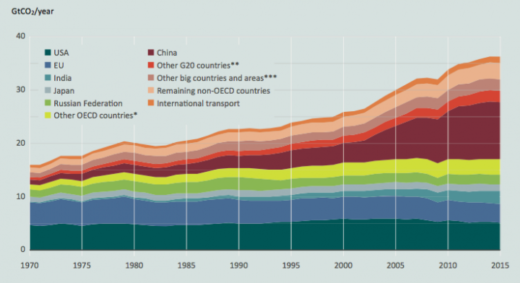The Paris Agreement to limit global warming goes into effect Friday. It’s stated goal is to keep the world from warming more than 2°C (3.6°F) above pre-industrial times.
There’s just one problem: the greenhouse gas emissions reductions countries have pledged so aren’t nearly enough to meet that goal, according to the United Nations’ Environmental Program’s fifth annual emissions gap report published on Thursday.
The carbon pollution cuts on the table from now through 2030 will put the world on a trajectory to warm 3.4°C (6.1°F) by 2100. In order to keep warming close to the 2°C threshold, the world will have to find a way to cut an additional 25 percent of its carbon pollution.
Last year, around 39 gigatons of carbon dioxide was emitted globally. While the Paris Agreement will limit emissions, particularly in developed countries, a number of developed countries will still likely see their emissions rise over the coming decade. For example, China is expected to peak its emissions in 2030.
That means the world’s cumulative emissions could reach 52 gigatons by 2030 — even if all Paris Agreement pledges are met (and that’s a big if).
